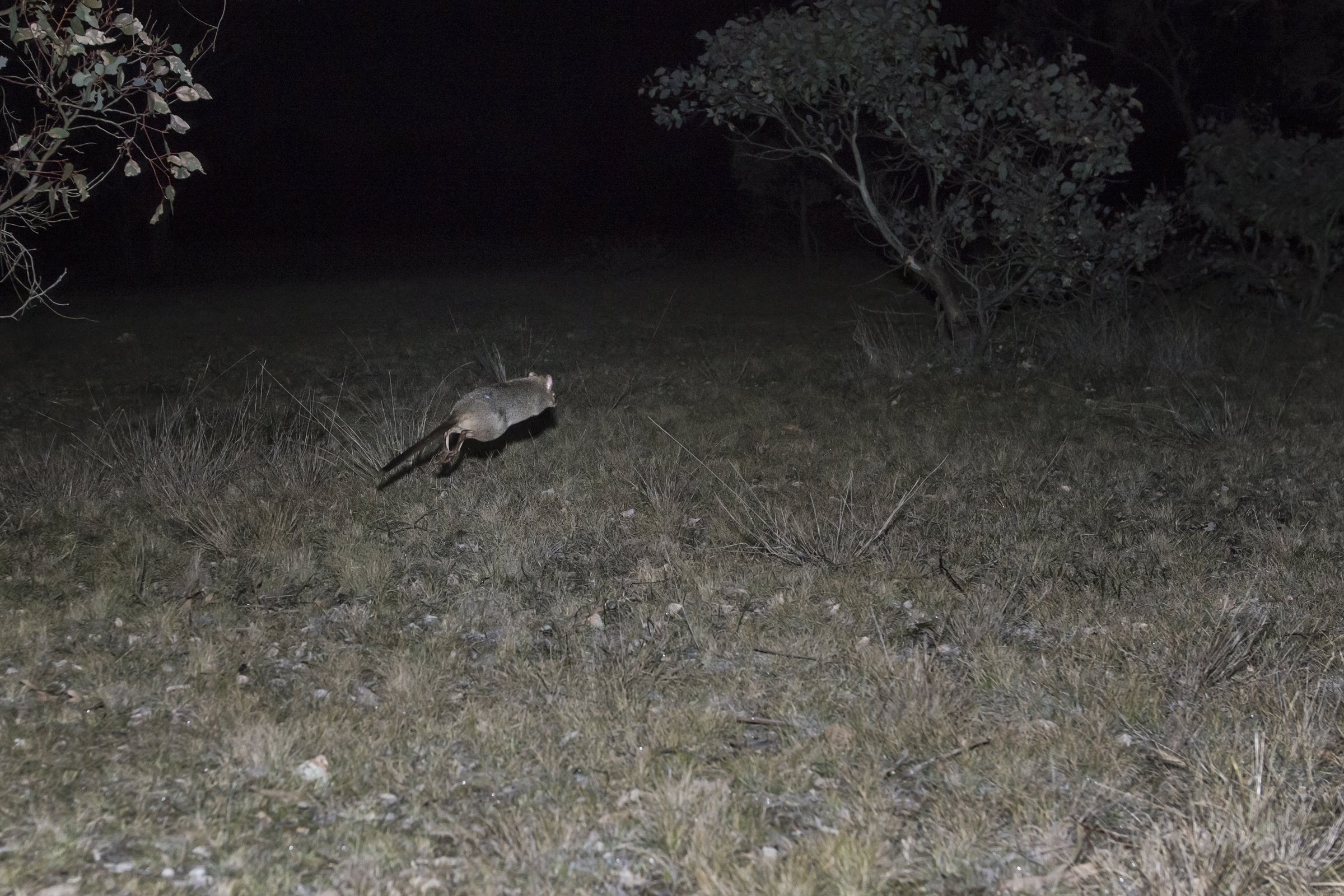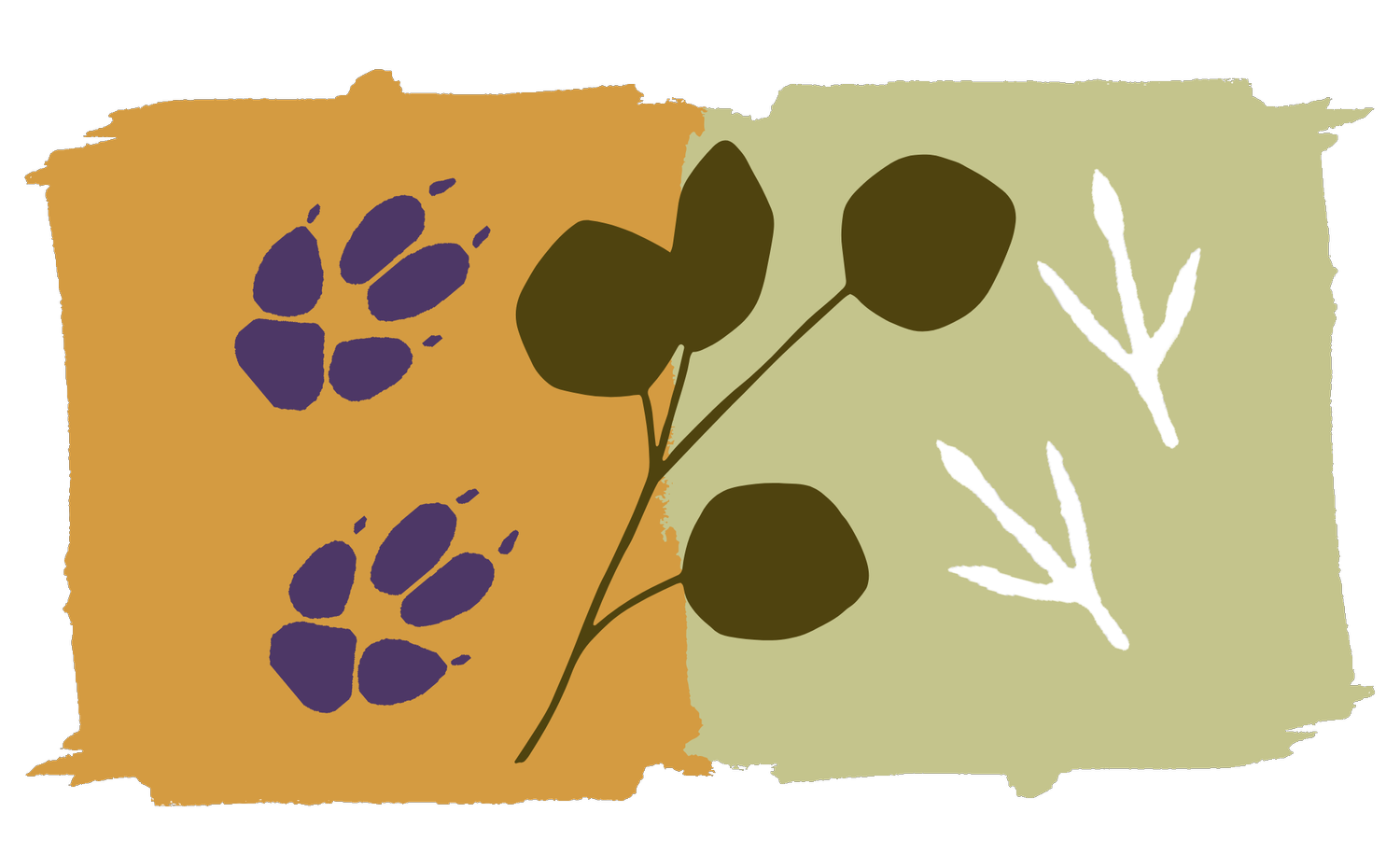
Eastern bettong
Reintroduction biology
The goal of a reintroduction is to bring back an extinct species into its native habitat, and the success of such efforts can vary. Different release tactics are employed to increase the chances of success. One approach is a delayed-release, where the reintroduced animals are temporarily confined before release, often at the release site or in captivity. Another approach is an immediate-release, where the animals are released shortly after capture.
A study compared these tactics in the context of reintroducing wild eastern bettongs. Surprisingly, the study found that the release tactic did not significantly affect post-release outcomes, even though the delayed-release group was heavier and had fewer young in their pouches at release. The study suggests that an immediate-release is preferable if the risk of introducing diseases or pathogens can be assessed beforehand, but if quarantine is necessary, a delayed-release is a viable option without compromising the chances of successful establishment.
Ecosystem effects
Ecosystem engineers are animals that modify, maintain or create habitats for other organisms, either through their own physical structure (e.g. corals, trees, kelp) or by changing the environment through their behaviours (e.g. beavers, earthworms, termites).
Digging or burrowing animals are often considered to be ecosystem engineers because their diggings change the availability of certain resources and provide habitat for other species. This disturbance is important for nutrient cycling, water infiltration, spreading fungal spores, and also creating suitable sites for seed germination, creating hot-spots of productivity and diversity. Many of Australia’s digging animals have become extinct or experienced severe declines since European settlement, and their loss is thought to have contributed to the decline of many ecosystems.
The reintroduction of the eastern bettong (Bettongia gaimardi) to Mulligans Flat in 2012 provided a unique opportunity to study the effects of returning a locally extirpated ecosystem engineer, in the context of the broader MFGO Woodland Experiment. Investigations led by Dr Nicola Munro and Dr Catherine Ross have found that bettong digging has widespread and profound effects on soil structure and health, seed germination, and plant community composition.
Conservation genetics
Since the reintroduction of eastern bettong to Mulligans Flat in 2012 we have undertaken studies of eastern bettong diet, assessed the effectiveness of our reintroduction method, and contributed to the science on best-practise monitoring for translocations- all using conservation genetics. We have also looked at the trends across time in genetic diversity, checked for inbreeding, and made recommendations about future management actions to maximise the long-term health of the population.
These genetic studies have confirmed that using multiple sources is highly effective for reintroducing eastern bettong to mainland Australia, as the Mulligans Flat population had higher genetic diversity than any single Tasmanian population! We are now looking forward, and will be using this genetic information to advise future translocations and the ongoing, adaptive management of Mulligans Flat.
Publications
Ross, C.E., McIntyre, S., Barton, P.S., Evans, M.J., Cunningham, S.A. & Manning, A.D. (2020). A reintroduced ecosystem engineer provides a germination niche for native plant species. Biodiversity and Conservation, 29, p. 817–837
Munro, N.T. et al. (2019). Returning a lost process by reintroducing a locally extinct digging marsupial. PeerJ, 7, e6622. Published online May 27 2019.
Manning, A. D. et al. (2019). Transition to density dependence in a reintroduced ecosystem engineer. Biodiversity and Conservation, 28, 3803-3830.
Ross, C.E., Munro, N.T., Barton, P.S., Evans, M.J., Gillen, J., Macdonald, B.C.T., McIntyre, S., Cunningham, S.A. & Manning, A.D. (2019). Effects of digging by a native and introduced ecosystem engineer on soil physical and chemical properties in temperate grassy woodland. PeerJ, 7, p.e7506.
Batson, W. G., Gordon, I. J., Fletcher, D. B., Portas, T. J., & Manning, A. D. (2017). The effect of pre‐release captivity on the stress physiology of a reintroduced population of wild eastern bettongs. Journal of Zoology, 303(4), 311-319.
Batson, W. G., Gordon, I. J., Fletcher, D. B., & Manning, A. D. (2016). The effect of pre-release captivity on post-release performance in reintroduced eastern bettongs Bettongia gaimardi. Oryx, 50(4), 664-673.
Portas, T. J. et al. (2016). Beyond morbidity and mortality in reintroduction programmes: changing health parameters in reintroduced eastern bettongs Bettongia gaimardi. Oryx, 50(4), 674-683.




